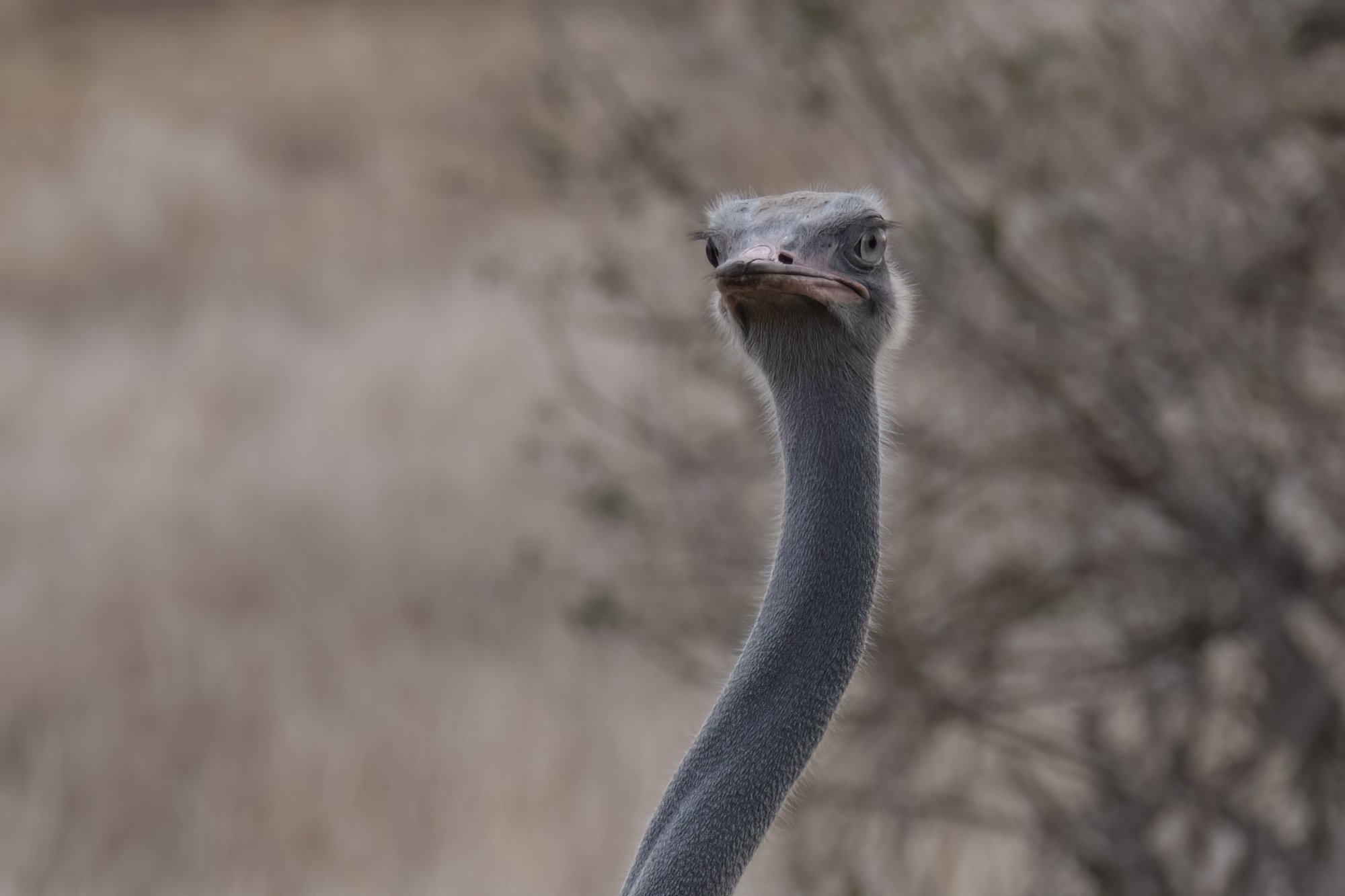We Change Through Delight
We Change Through Delight
Being with wildlife is a tonic for me. I’m never sure what will happen, but my curiosity is in full gear when I’m out on a game drive. Late one afternoon we came across a lone male Somali ostrich in Laikipia, Kenya. These huge birds look like they’ve just walked off the page of a Dr. Seuss story.
Keeping his huge eyes on us, the ostrich slipped behind a tree for a game of peek a boo. Did you know at 5cm (2”) across, the ostrich has the largest eyes of any land animal? Those big eyes can spot a predator as far as 3.2 kms away. Long eyelashes protect their eyes from the sun. It’s a myth that ostriches bury their heads in the sand, however, they will sometimes lie low on the ground and stretch out their long necks to hide from predators.
I tried to capture the whole bird at first, not an easy feat since the ostrich is the largest feathered animal in world 2.1 – 2.7 meters (7-9’) tall and 63-145 kg (250 -320 lbs)! With each step the ostrich’s head dipped like a bobble head toy. His amusing behaviour changed my mood, so long National Geographic documentary, hello Animal Comedy Series.
My playful side ignited, I aimed my long lens on his remarkable blue bald head, huge eyes and long lashes. I became a bobbing action figure myself as I tried to track his duck and weave step with my long lens.
Ostriches have long hairy necks that taper down into huge fluffy feathered bodies with strong legs supported by 2-clawed feet. Although flightless, they are the fastest running bird on land. They can run distances at 48 kmh (30-37 mph) sprint up to 70kmh! That’s faster than most birds can fly. Their long legs can cover 16’ in one stride.
Ostriches live 30-40 years in the wild. They can outrun most threats. Their powerful legs also pack a mean punch – strong enough to kill a lion!
These feathered giants hang out with grazing animals like wildebeests and zebras. The grazers stir up insects and rodents for the ostriches to eat, and the ostriches warn the grazers of dangers such as approaching lions or leopards. The Somali ostrich has a blue neck and legs when he is looking for a mate whereas the common ostrich found in southern Kenya has a red neck and legs in mating season.
Nature is an unending source of delight for me. From the ostrich playing peek a boo to laughing cheetahs, there’s always something that captures my imagination and lifts me up. Check out the annual Comedy Wildlife Photography images of finalists for your smile for the day.








